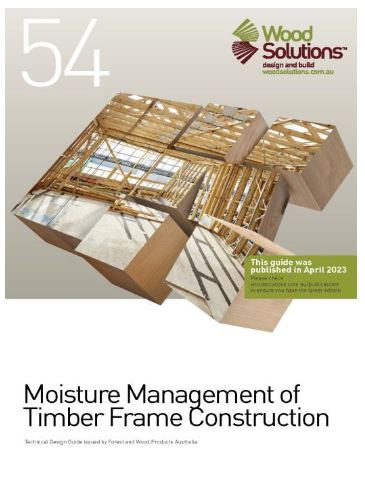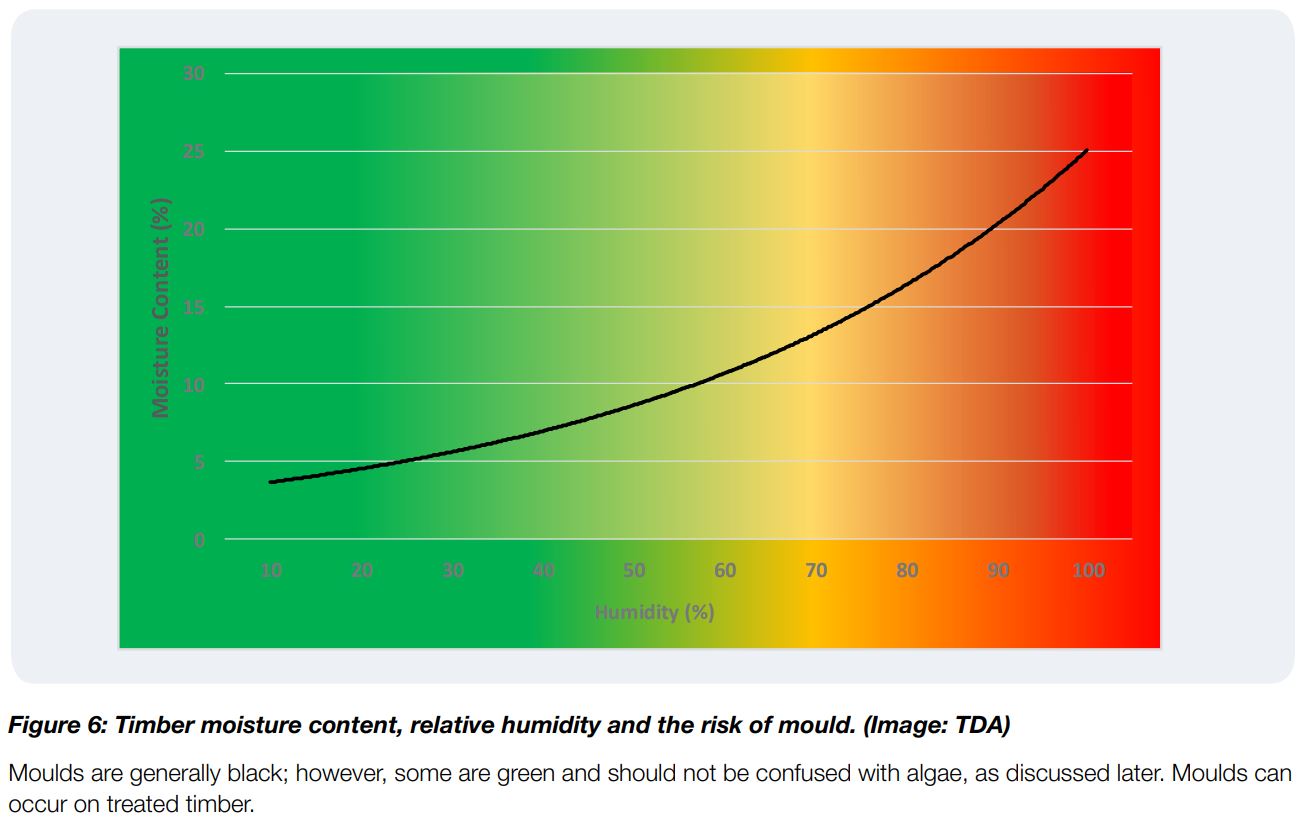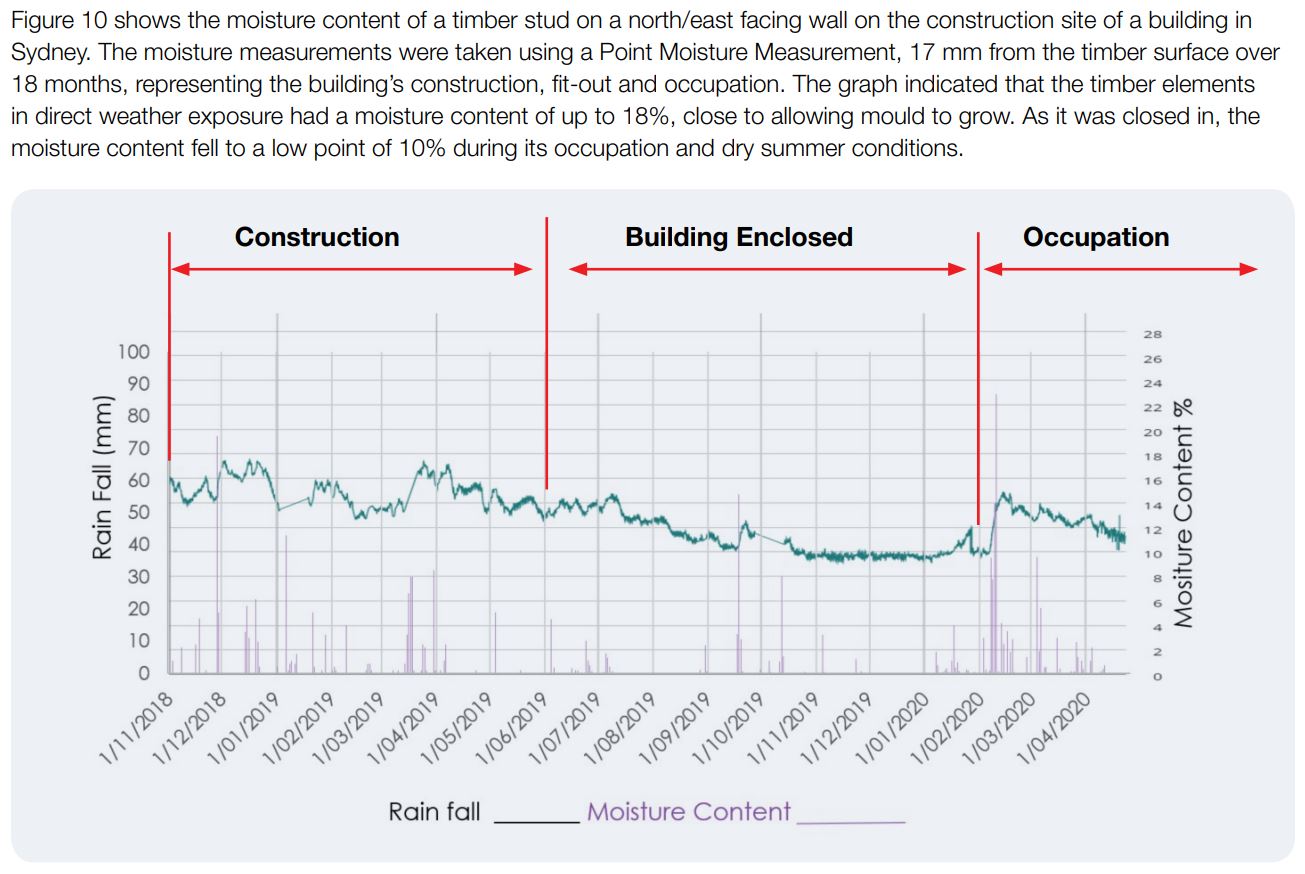Written by FTMA’s Kat Welsh

What You Need to Know About Moisture Management of Timber Frame Construction
Welcome back for the September edition of Design Guides That Matter #9. Where we are showcasing the incredible technical design guides that make up the FREE resources produced by WoodSolutions. For more general information on the design guides, January’s FTMA article has the main insight into what a great resource WoodSolutions has available.
This month we’re focusing on:
Moisture Management of Timber Frame Construction
(54th in the series of guides)

This guide is a detailed insight into what goes wrong for timber when the levels of moisture are high enough and substantial enough, for issues to start occurring – namely mould and rot being given the opportunity to set in. It gives information about how this can occur, the ideal conditions for moisture and mould, and how to check for it. What this does, aside from providing valuable facts, is strengthen the case about why its important to get this as right as possible when constructing anything out of timber, if you want it to last.
It is after all a natural process, designed to break down dead matter to then feed new growth in a forest – but in a home, that’s the part of the natural cycle you don’t want. There are ways to minimise this process, and even eliminate it, if you prevent as much moisture as possible from gaining traction with timber especially during the construction phase.

In most cases, timber elements arrive on a construction site near or at their equilibrium moisture content. It is the activities on the construction site that are responsible for introducing moisture back into the timber.The primary way to prevent moisture from reaching a timber structure is for construction managers must realise that the installation and the covering of timber elements take precedence over other activities, particularly if the timber element has a decorative finish purpose.The following principles and strategies should be applied to each building project.
- Minimise site work and time by utilising off-site prefabrication, including wall, roof and floor elements.
- Schedule timber installation during a relatively dry season, if possible.
- Coordinate material delivery for just-in-time installation to eliminate site storage needs. This includes sequencing the load so that each element that comes off the truck is in the order of assembly.
- Minimise the time of exposure to the elements, particularly for horizontal elements that allow liquid moisture to pool.
- Install the roof and exterior wall structure to complete the enclosure as early as practicable to protect the entire structure. The installation of exterior wall and roof membranes or sheet panels may provide temporary weather protection.
- The structure and each assembly should be designed to minimise the potential of ponding or trapping moisture by allowing it to drain and dry. The common area is the joints in timber.
(WoodSolutions, Moisture Management of Timber Frame Construction).

This guide helps to highlight why moisture control is imperative, and gives sound advice on how to protect the timbers as well as can be managed during the construction phase. Given that this period is important to the future of the home, it’s protecting the integrity of the industry as well as the longevity of the building, by getting it right.

We highly recommend these resources, all instantly at your fingertips, and crafted by experts in this field. Please get on to it! Make the most of the abundance of combined knowledge.
It’s free and easy to register an account with WoodSolutions and then the design guides are also free to access after that. The library is constantly being added to, updated, and are often discussed in WoodSolutions’ webinars, blogs and social media posts.
Follow WoodSolutions on social media for regular news
Our Principal Partners




